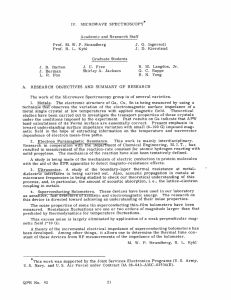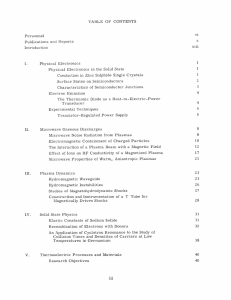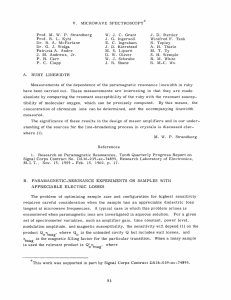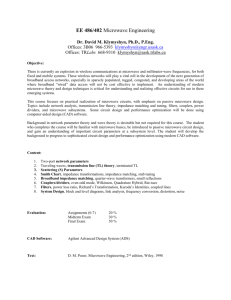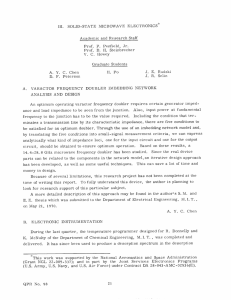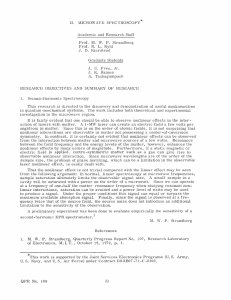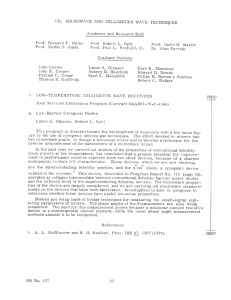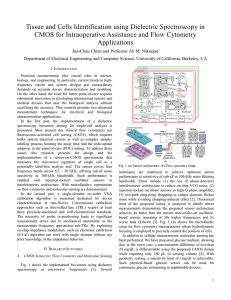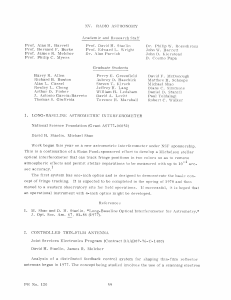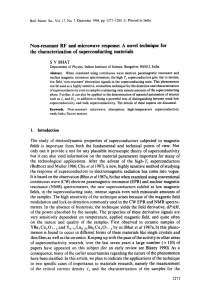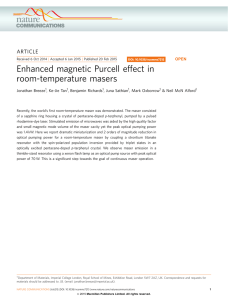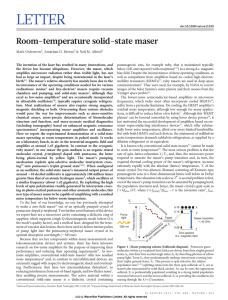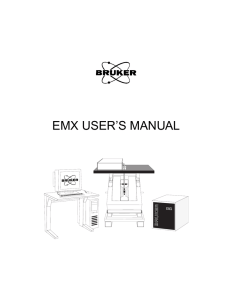VI. MICROWAVE SPECTROSCOPY* R. Huibonhoa
advertisement
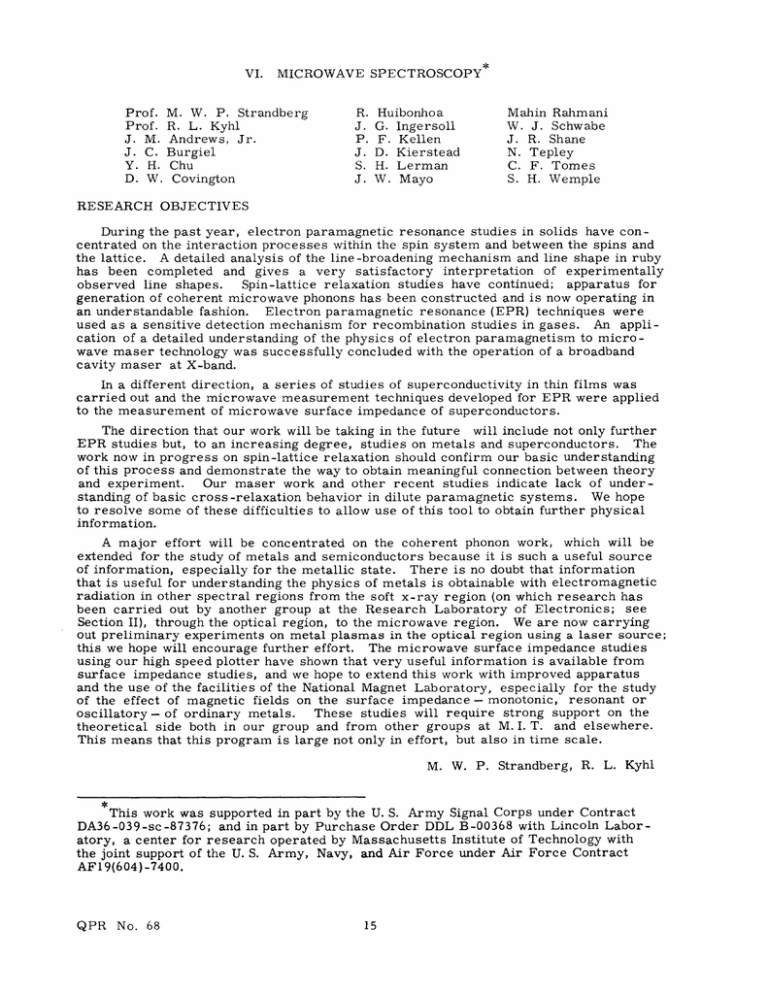
VI. Prof. Prof. J. M. J. C. Y. H. D. W. MICROWAVE SPECTROSCOPY* M. W. P. Strandberg R. L. Kyhl Andrews, Jr. Burgiel Chu Covington R. J. P. J. S. J. Huibonhoa G. Ingersoll F. Kellen D. Kierstead H. Lerman W. Mayo Mahin Rahmani W. J. Schwabe J. R. Shane N. Tepley C. F. Tomes S. H. Wemple RESEARCH OBJECTIVES During the past year, electron paramagnetic resonance studies in solids have concentrated on the interaction processes within the spin system and between the spins and the lattice. A detailed analysis of the line-broadening mechanism and line shape in ruby has been completed and gives a very satisfactory interpretation of experimentally Spin-lattice relaxation studies have continued; apparatus for observed line shapes. generation of coherent microwave phonons has been constructed and is now operating in an understandable fashion. Electron paramagnetic resonance (EPR) techniques were used as a sensitive detection mechanism for recombination studies in gases. An application of a detailed understanding of the physics of electron paramagnetism to microwave maser technology was successfully concluded with the operation of a broadband cavity maser at X-band. In a different direction, a series of studies of superconductivity in thin films was carried out and the microwave measurement techniques developed for EPR were applied to the measurement of microwave surface impedance of superconductors. The direction that our work will be taking in the future will include not only further EPR studies but, to an increasing degree, studies on metals and superconductors. The work now in progress on spin-lattice relaxation should confirm our basic understanding of this process and demonstrate the way to obtain meaningful connection between theory Our maser work and other recent studies indicate lack of underand experiment. standing of basic cross -relaxation behavior in dilute paramagnetic systems. We hope to resolve some of these difficulties to allow use of this tool to obtain further physical information. A major effort will be concentrated on the coherent phonon work, which will be extended for the study of metals and semiconductors because it is such a useful source of information, especially for the metallic state. There is no doubt that information that is useful for understanding the physics of metals is obtainable with electromagnetic radiation in other spectral regions from the soft x-ray region (on which research has been carried out by another group at the Research Laboratory of Electronics; see Section II), through the optical region, to the microwave region. We are now carrying out preliminary experiments on metal plasmas in the optical region using a laser source; this we hope will encourage further effort. The microwave surface impedance studies using our high speed plotter have shown that very useful information is available from surface impedance studies, and we hope to extend this work with improved apparatus and the use of the facilities of the National Magnet Laboratory, especially for the study of the effect of magnetic fields on the surface impedance - monotonic, resonant or These studies will require strong support on the oscillatory - of ordinary metals. theoretical side both in our group and from other groups at M. I. T. and elsewhere. This means that this program is large not only in effort, but also in time scale. M. W. P. Strandberg, R. L. Kyhl This work was supported in part by the U. S. Army Signal Corps under Contract DA36-039-sc-87376; and in part by Purchase Order DDL B-00368 with Lincoln Laboratory, a center for research operated by Massachusetts Institute of Technology with the joint support of the U. S. Army, Navy, and Air Force under Air Force Contract AF19(604)-7400. QPR No. 68
